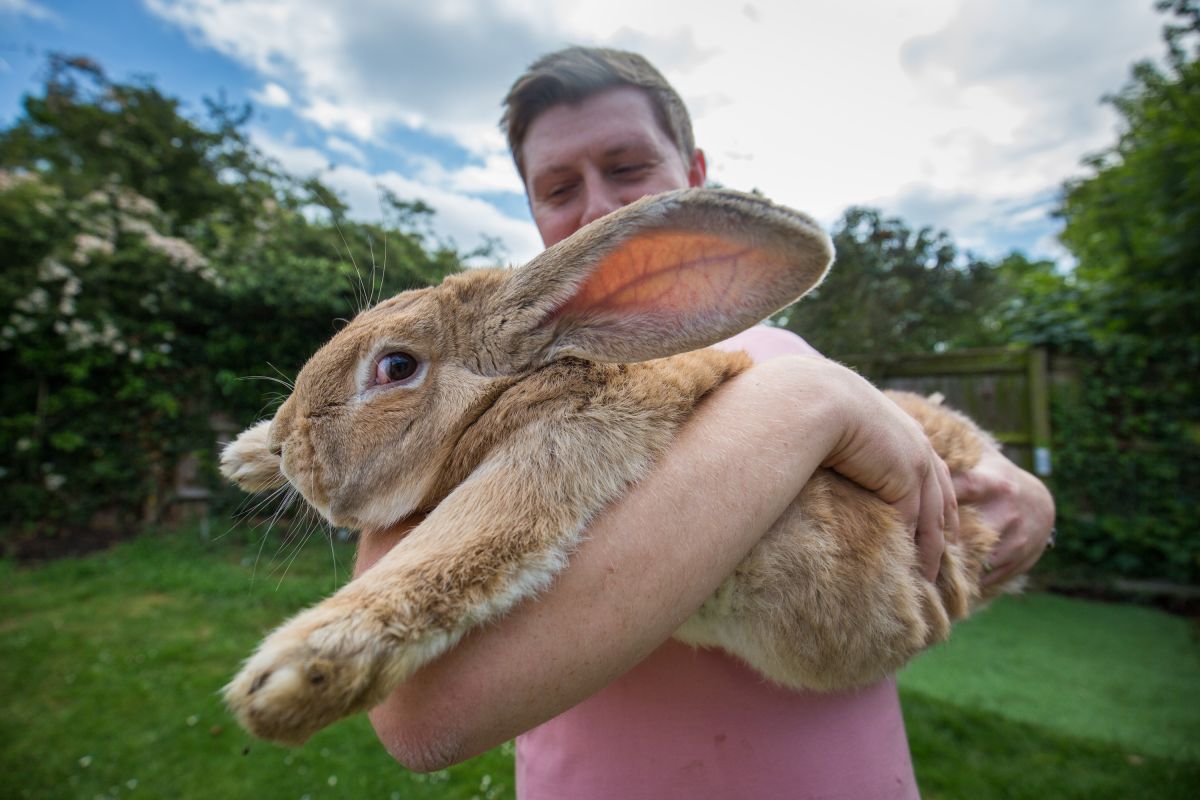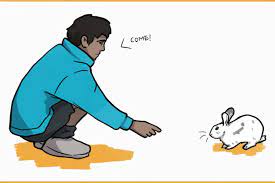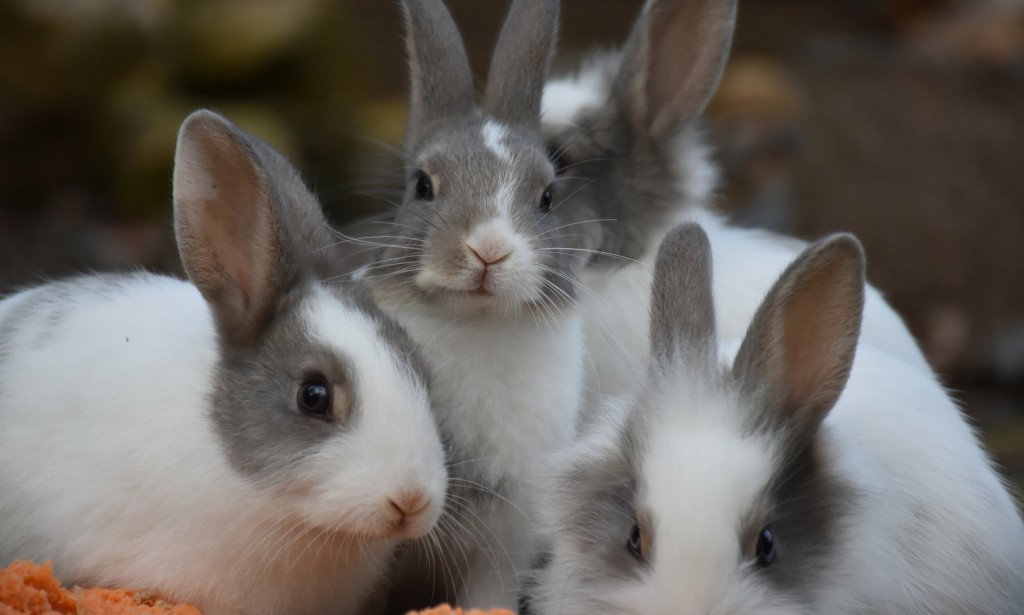Article:
Rabbits are social animals, with colonies of the fluffy mammal occupying most of the world’s land masses. Rabbits are small mammals with fluffy, short tails, whiskers, and distinctive long ears. These 29 species around the world, according to Nature by PBS(opens in new tab) and, while they live in many different environments, they have many things in common.
Rabbits and hares are in the same taxonomic family, Leporidae, but they are in different genera. There are 11 genera within the family, but the term “true hares” refers only to species in the genus Lepus; all others are rabbits. Also, the American Rabbit Breeders Association (ARBA)(opens in new tab) recognizes 49 rabbit breeds.

How big are Rabbits?
A few rabbits are approximately the scale of a cat, and a few can turn out to be as large as a small child. Small rabbits, together with pygmy rabbits, can be as little as 9.3 inches (24 centimeters) in duration and weigh much less than a pound, in line with the U.S. Fish and flora and fauna carrier. Larger species grow to 20 inches (50 cm) and extra than 10 lbs. (4.5 kilograms). According to the journal of applied Animal studies, the Flemish massive is the largest rabbit breed in the global. The common weight of the Flemish large is 25 lbs. (11 kg), according to the global Atlas. Other huge rabbit species consist of the Continental large at 16 lbs. (7 kg) and the Blanc De Bousquet at 15 lbs. (6 kg). . The sector's longest character rabbit, in line with Guinness World Records, is a Flemish massive that clocked in at 4 ft 3 inches (129 cm) and 49 lbs. (22 kg).

How often can rabbits reproduce?
Rabbits have a quick gestation duration, between 25 and 28 days, because of this they can have several litters of babies every year. Eastern cottontail rabbits may have between 1 and 7 liters each year, and they average 3 or four liters yearly. It is better to mate the doe when her young (litter) is 4 weeks old so that they are 8 weeks old when the next litter is born. In this way, one doe can produce 6 liters a year. Two weeks after mating you can feel the young through the side of the doe's belly. Traditionally people keep all their rabbits together. After birth, the mother rabbit can become impregnated again almost immediately. This means that. in theory, a female could have a litter every month of the year. It's no wonder that rabbits have quite the reputation for making babies.

What does a rabbit eat?
Rabbits are herbivores, consistent with the magazine of Mammalogy(opens in new tab). This means that they’ve got a plant-based weight loss plan and do not eat meat. Their diets encompass grasses, clover, and a few cruciferous florae, including broccoli and Brussels sprouts. They may be opportunistic feeders, in keeping with the college of Missouri(opens in new tab), and so also eat results, seeds, roots, buds, and tree bark.
Where do they live?
At the same time first, in Europe and Africa, rabbits are found all over the international. Wild rabbits occupy most of the sector’s continents, except Asia and Antarctica, in step with ADW. Even though at the beginning absent from many nations, which include Australia and New Zealand, rabbits have been added to those locations in the course of a previous couple of centuries, consistent with the magazine Mammal assessment. Home rabbits want a regulated environment to shield them from warmth exhaustion or hypothermia. Wild rabbits don't have this hassle and make their houses in various temperature extremes. Wild rabbits may be determined in woods, forests, meadows, grasslands, deserts, tundra, and wetlands.
Wild rabbits create their own houses via tunneling into the floor. These tunnel structures are called warrens and include rooms for nesting and snoozing. They also have a couple of entrances for a quick getaway. Warrens can be as deep as 9.84 ft (3 meters) underground, in line with the Textbook of Rabbit Medicine.

Rabbit’s Habit.
Rabbits are very social creatures and stay in massive businesses known as colonies. The busiest time of day for rabbits is at dusk and dawn, according to the complaints of the 8th world Rabbit Congress. This is after they mission out to find food. The low light lets them be covered by predators.
Predators — which consist of owls, hawks, eagles, falcons, wild dogs, feral cats, and ground squirrels — are a steady hazard. The rabbit’s lengthy legs and ability to run for long periods at excessive speeds are probably evolutionary adaptations to help them elude things that want to devour them.
Facts about the rabbit.
Rabbits may be very cunning and quick. To get away from a predator, a cottontail rabbit will run in a zigzag pattern and attain speeds of up to 18 mph (29 km/h), in line with Warnell faculty of Forestry and herbal sources at the College of Georgia.
Their ears can grow to four inches (10 cm), in step with PDSA). This stretched-out period lets them to better hear predators that may be drawing close. It also permits them to live coolly in hot climates. Extra frame heat is launched via blood vessels in the ear, in keeping with the Biomimicry Institute.
Their eyes are made for protection, too, for the reason that each eye can rotate nearly 360 levels, in step with North American Nature. This permits them to look at the back of them without turning their heads.
Rabbits don't get a lot of nourishment from their diet. They frequently eat their excrement to access any ultimate nourishment that their digestive device may additionally have neglected the primary time, consistent with the e-book vitamins of the Rabbit.

Rabbits make great pets for children. However, they are fragile and young children should not handle them. They can accidentally cause injury by picking the rabbit, squeezing it too tightly, or dropping them. Children should always be supervised when interacting with and, in the case of older children, handling rabbits.
Can rabbits recognize their owner?
Rabbits can and do recognize their owners. Whilst typically not being as affectionate as cats or dogs, rabbits do form bonds with their owners, and there are several tell-tale signs to look out for. The most important factor in encouraging your rabbit to recognize and respond to you is spending time with your bunny.




You must be logged in to post a comment.